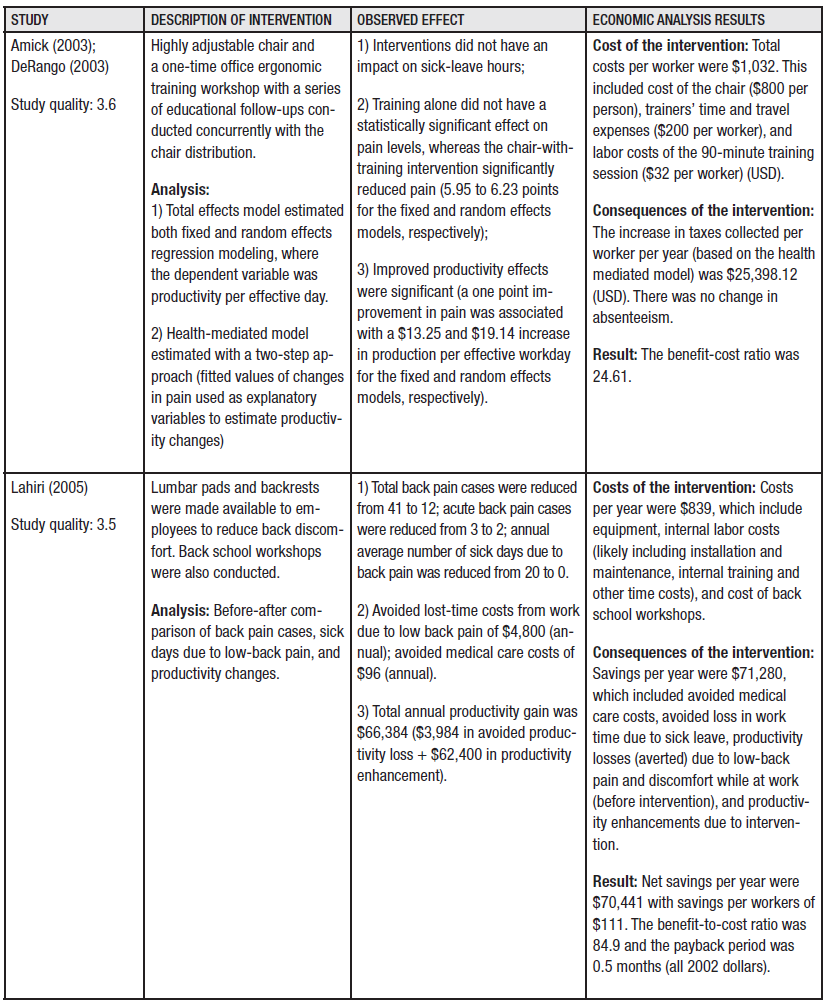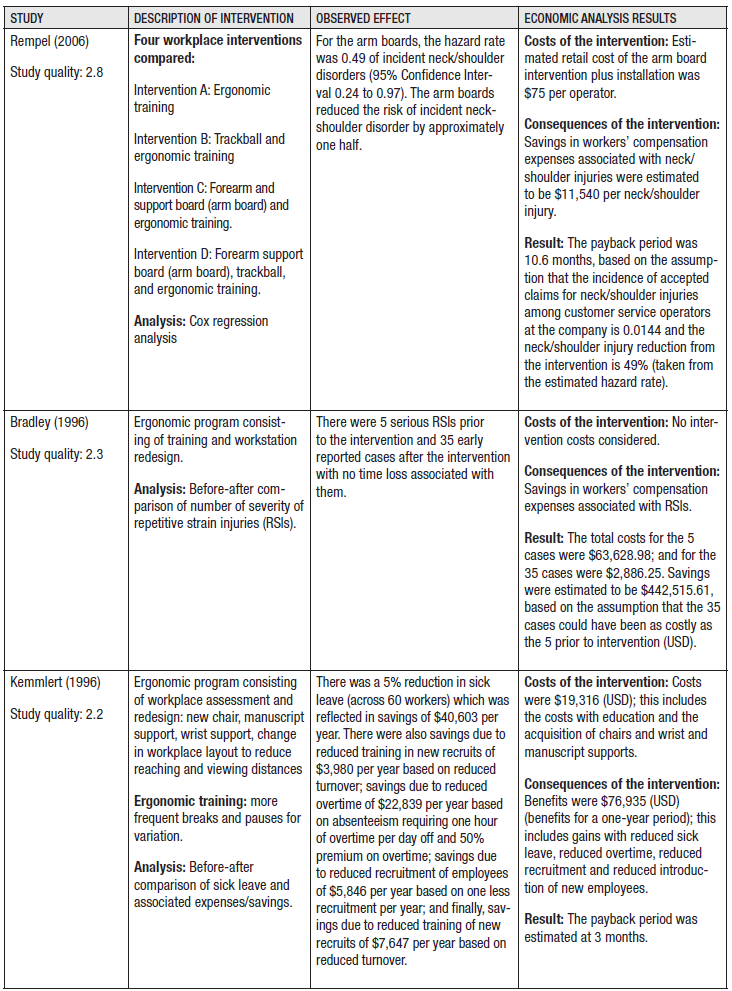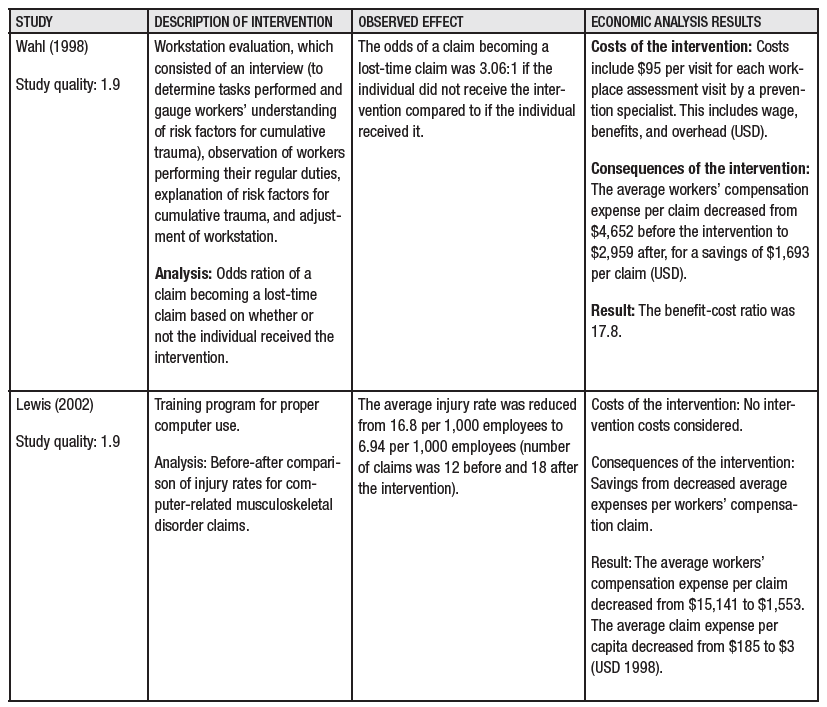
By Jerome E. Spear, CSP, CIH
The body of scientific evidence supports the financial case for ergonomic programs. Strong evidence indicates that ergonomic programs are cost effective (Amick, Brewer, Tullar, Van Eerd, Cole, & Tompa, 2009). The evidence is particularly strong for ergonomic programs implemented in manufacturing (Tompa, Dolinschi, de Oliveira, & Irvin, 2007). There is also support for the cost-effectiveness of ergonomic programs in the administrative and support sector, the healthcare sector and the transportation sector (Tompa, Dolinschi, de Oliveira, & Irvin, 2007).
Economic Evaluations of Ergonomic Interventions for the Administrative and Support Services Sector
Tompa et al. (2007) conducted a systematic review of workplace occupational health and safety interventions with economic evaluations. The interventions included were undertaken in a number of different industries; in total, 12 industry sectors were listed. In the administrative and support services sector, a cluster of eight intervention evaluations (identified within the category of ergonomics and other musculoskeletal injury prevention interventions) were identified, summarized and ranked by the quality of the study. Two intervention evaluations were considered to be high quality studies, one was of medium quality, and five were of low quality. As a result, Tompal et al. (2007) concluded that there was moderate evidence that such interventions in the administrative and support services sector are worth undertaking on the basis of their financial merits. They may be beneficial due to a reduced frequency or severity of injuries, which ultimately results in savings, and/or productivity improvements that result in savings.
Table 1 lists (by order of study quality) the eight research studies that examined the economic impacts of ergonomics in preventing musculoskeletal disorders in the administrative support sector. A summary of the observed effects and economic analysis results are also included in Table 1.
Economic Evaluations for Disability Management Interventions
Tompa et al. (2007) also included studies pertaining to disability management interventions in their systematic review of workplace occupational health and safety interventions with economic evaluations. Their findings suggested that disability management interventions, across multiple industry sectors, provided strong evidence and are worth undertaking based on economic analyses (Tompa, Dolinschi, de Oliveira, & Irvin, 2007).

Table 1 Economic Impacts of Ergonomics in Preventing Musculoskeletal Disorders in the Administrative Support Sector



Adapted from Tompa, E., Dolinschi, R., de Oliveira, C., & Irvin, E. (2007). A Systematic Review of OHS Interventions with Economic Evaluations; Volume 2 (Appendix L). Toronto, Ontario, Canada: Institute for Work and Health
References
Amick, B. C., Brewer, S., Tullar, J., Van Eerd, D., Cole, D., & Tompa, E. (2009, March). Muskuloskeletal Disorders: Examining Best Practices for Prevention. Professional Safety , 24-28.
Tompa, E., Dolinschi, R., de Oliveira, C., & Irvin, E. (2007). A Systematic Review of OHS Interventions with Economic Evaluations, Volume 1 & 2. Toronto, Ontario, Canada: Institute for Work & Health.


